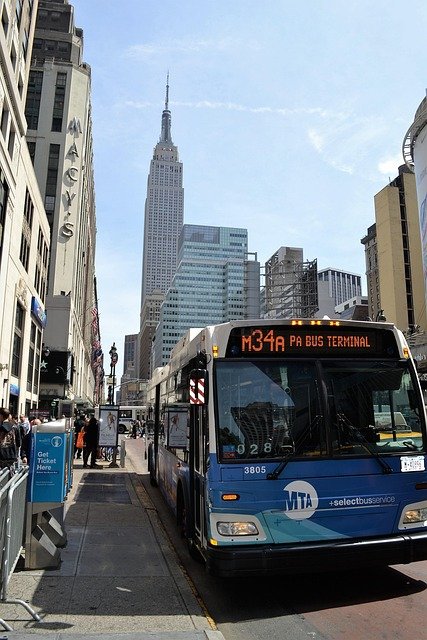
The New York City Congestion Relief Zone tolling program went into effect Jan. 5, 2025, impacting private vehicles entering Manhattan below 60th Street.
Photo by Marc A. Hermann / MTA
After years of study and planning, and not a little controversy, the New York Metropolitan Transportation Authority (MTA) activated the nation’s first congestion pricing program on Jan. 5, 2025. Under a state-mandated effort to reduce traffic congestion and raise revenue to improve public transportation, most motorists entering Manhattan below 60th Street, an area known as the Congestion Relief Zone (CRZ), must now pay a fee determined by the time of day, type of vehicle and other factors monitored by a network of more than 110 detection points fitted with 1,400 cameras and automated EZPass readers.
While the program has so far survived several lawsuits, it’s future is far from certain. A temporary restraining order issued in May has prevented the Trump administration from following through on its threat to withhold federal approvals and funding for road projects in Manhattan unless the state of New York terminates the CRZ tolls. That case could be decided later this summer.
Meanwhile, MTA says the program is fulfilling its goals, with inbound trips on all Hudson and East River crossings as much 30% faster than previous years. Travel times within the CRZ have also improved, with delays reduced by as much as 59%.
ENR correspondent Jim Parsons spoke with Juliette Michaelson, MTA deputy chief for policy and external relations, about the program and what factors contributed to the successful rollout. This interview has been edited and condensed for clarity.
ENR: First, tell us a little about yourself. How did you get into the transportation arena?
Michaelson: I started in the environmental advocacy arena, and realized what I really loved more than anything was making cities work. Some of the most long-term decisions are related to transportation systems.
Congestion pricing strategies for Manhattan have been discussed since the 1970s. What ultimately provided impetus for the system MTA put in place?

Juliette Michaelson
The 2019 state law directing MTA to implement a congestion pricing system stemmed in part from the advent of Amazon and similar services that, in recent years, had put a lot of small commercial vehicles on city streets, significantly affecting travel speeds. There were also a series of high-profile incidents on the transit system resulting from years of under-investment. The 2019 law was designed to tackle both those things.
What were the infrastructure considerations in planning and implementing the program?
We worked to install detection points as discretely as possible on every avenue and every bridge and tunnel leading into the CRZ. We used existing poles, and only rarely did we have to install new infrastructure. This is a busy city with a lot going on visually, so it was important to make it as inconspicuous as possible.
As MTA was developing and implementing the program, were there issues or considerations that proved to be more important than originally expected?
Even though congestion pricing has long worked in several cities around the world, this was the first time it had been installed in the U.S. Our challenge was explaining to the public the concept of over-demand on a public space that has constraints. The pricing strategy was an attempt to dissuade demand for the space, applying the principle of supply and demand in a new context.
But it also shows how critical public engagement is to a program like this.
We had a very rigorous, multi-faceted campaign—ads on radio and TV, signs over the highway, social media and live webinars that anybody could log on to. I think for many people, even those who saw the messaging, it just clicked differently once the program began and they saw what it meant from one day to the next. There really was less traffic, it was quieter, buses moved faster. It was something of “believe it when you see it,” but they saw it. And more people have been supportive of the program since it was launched.
More than six months after launch the program appears to be working well. And are there any surprising or unexpected results or trends?
The results have been very consistent. Every month, we’re seeing 10% to 14% fewer vehicles entering the zone than entered during comparable months in previous years. We’re learning as we go, but for the most part, it’s going as we anticipated.
Going forward, how will MTA evaluate the CRZ’s effectiveness?
We’ll continue to monitor the number of vehicles entering, the impact it has not only on traffic speeds, but also reliability of those trips. A recent study of Waze data showed that the program had reduced delays from traffic jams by 25% compared to last year. Along with our own analyses, other agencies and non-profits are studying the effects on air quality and other factors.
Are there lessons learned from implementation of the program that other metropolitan areas can use to address their own congestion issues, especially as it relates to infrastructure?
Using a financial incentive to get people to travel less or at different times, or to ride-share, will likely always have a positive impact on traffic. But a big reason things are working out for us is that 90% of people who work in the CRZ had already been using public transportation. It’d be very different to implement a congestion pricing program if you didn’t already have a good public transit network in place.


